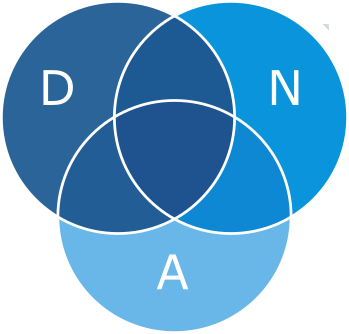Solutions for the medium/high/extra-high voltage sector
Although the interference levels generally decrease with an increase in the operating voltage, the issue of power quality is also important at the higher voltage levels. Especially for the tendering of larger generation or compensation plants, the levels of the harmonics present in the grid (background harmonics) are required. If a plant is newly installed in the grid, the grid connection guidelines may require that the grid disturbances caused by the plant be measured. For this purpose, we carry out the necessary measurements in accordance with the relevant standards or the Technical Connection Guidelines.
In the higher voltage levels, knowledge of the exact operating behavior of electrical operating equipment is becoming increasingly important. Due to the restructuring of power supply networks (increasing proportion of cable connections, power electronics, etc.), new questions often arise for which we have the necessary measurement technology. With our devices for time-synchronous recording of stationary and transient signals, we can record high-precision signals at different locations in order to determine, for example, the transmission behavior of lines, resonances excited in the network or ferroresonances of converters.
If a system is causing considerable network feedback, a measurement of the frequency-dependent network impedance can provide information about the network connection of the system. We have a method for determining the frequency-dependent network impedance for medium, high and extra-high voltage.
Power supply companies, distribution system operators and also transmission system operators have usually installed measuring devices at central and strategic locations to monitor the power quality. Often, these measuring devices are located in the field and cannot be dispensed with for an extended period of time. However, should you wish to check your power quality meters for proper operation and accuracy, we can test your power quality meters for you on site.
Commercially available power quality meters have voltage inputs with a maximum dielectric strength of 1000 V, so that voltage measurement must already be carried out in the medium voltage range using suitable voltage transformers. Experience shows that medium voltage transformers are suitable up to frequencies of 2 kHz to about 4 kHz, whereas voltage transformers above 110 kV can only be used to a very limited extent (max. 0.5 kHz to 1 kHz) at higher frequencies.
With many years of experience in electrical surveying and modeling of operating equipment, we have used our know-how on transformer bushing to offer our customers in the high and extra-high voltage range a solution for broadband voltage measurement. In addition, we have developed suitable invasive and non-invasive measurement techniques to determine the frequency response and thus the bandwidth of voltage transformers. This is of particular interest to customers in the medium voltage sector in order to determine the loading capacity of a measurement over the existing medium voltage transformers.
With the use of suitable measurement technology (e.g. frequency response measurement), the frequency response of harmonic filters can be measured both in the complete unit and the individual components (R, L, C elements). This allows the exact resonant frequency of the filter to be re-measured during commissioning and thus the effectiveness of the filter to be checked as a quality assurance measure. A well-known phenomenon is that the installed capacitors age over time and thus change their capacitance. The consequence of this is that the resonant frequency of the filter shifts and that the filter loses effectiveness. Therefore, it is recommended to re-measure the frequency response of the filter periodically (e.g. every 5 years).
We use the synergies with our Analysis division to intelligently evaluate the measurement data from the power quality measurements. This enables us, for example, to identify patterns that lead to a deterioration in power quality and to derive targeted countermeasures. In addition, we use our simulation programs to examine measured power quality phenomena in more detail and also to prove their origin by simulation. In a further step, the effectiveness of remedial measures can thus be investigated in order to offer you the best possible advice.

